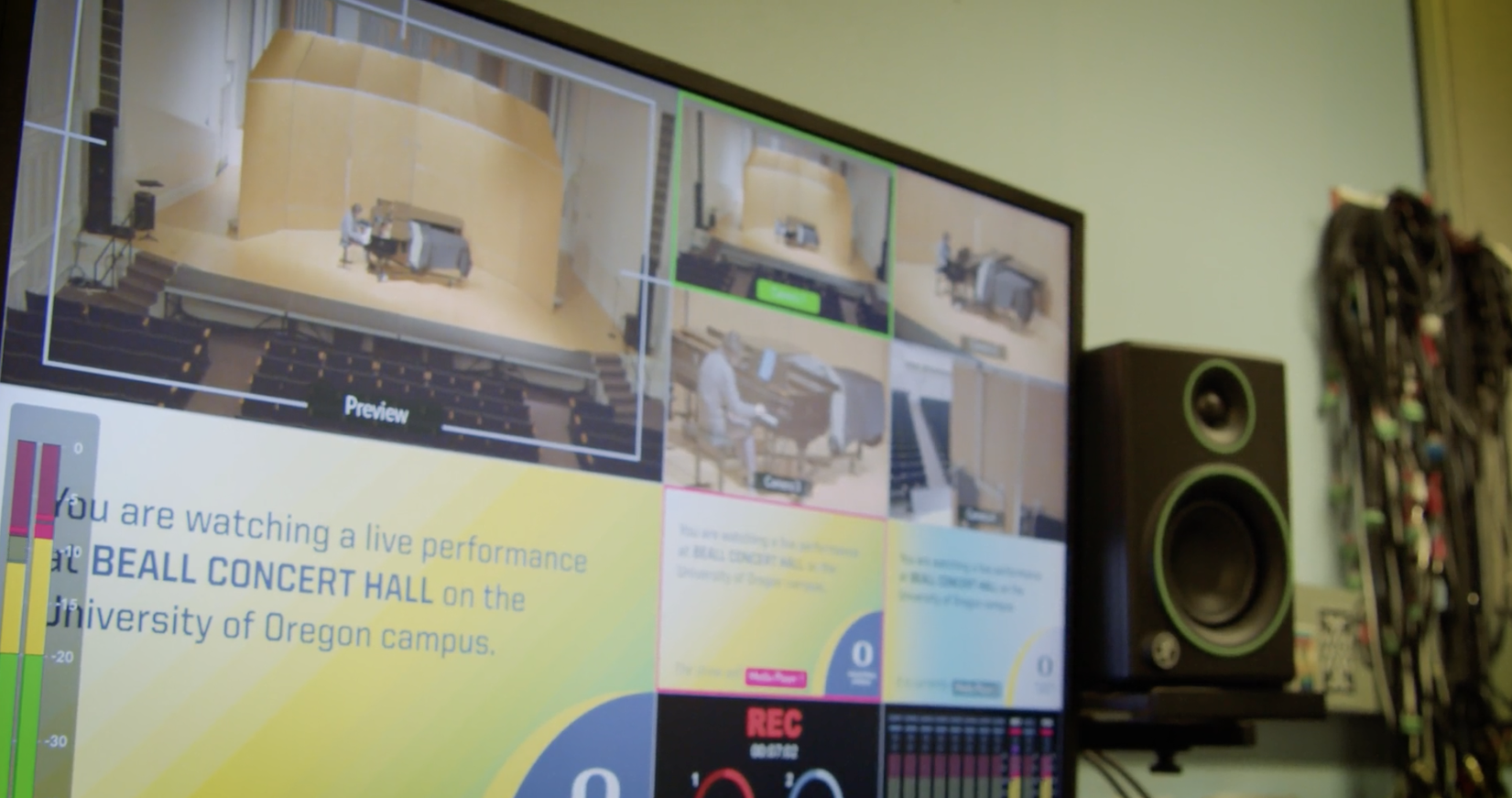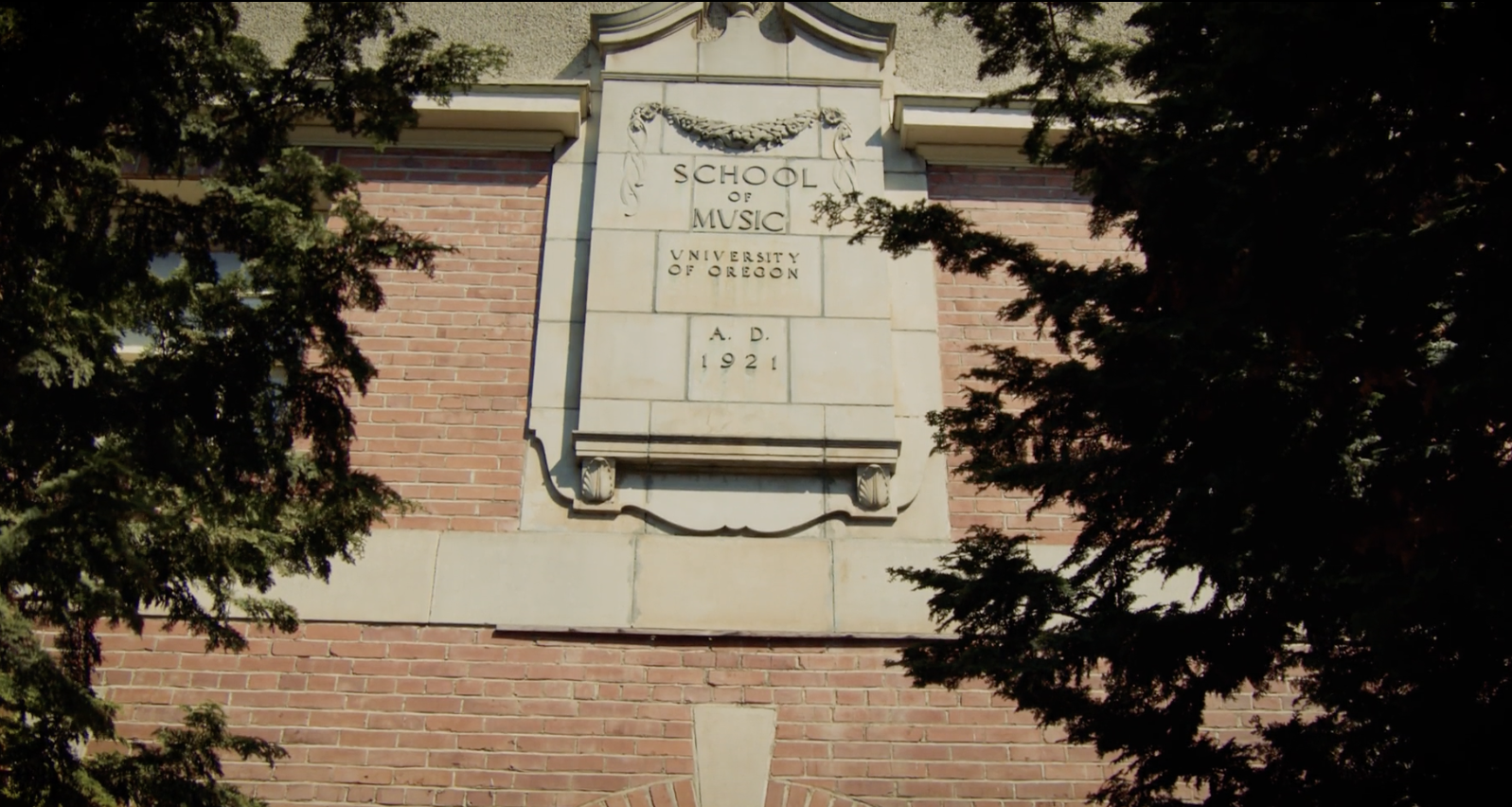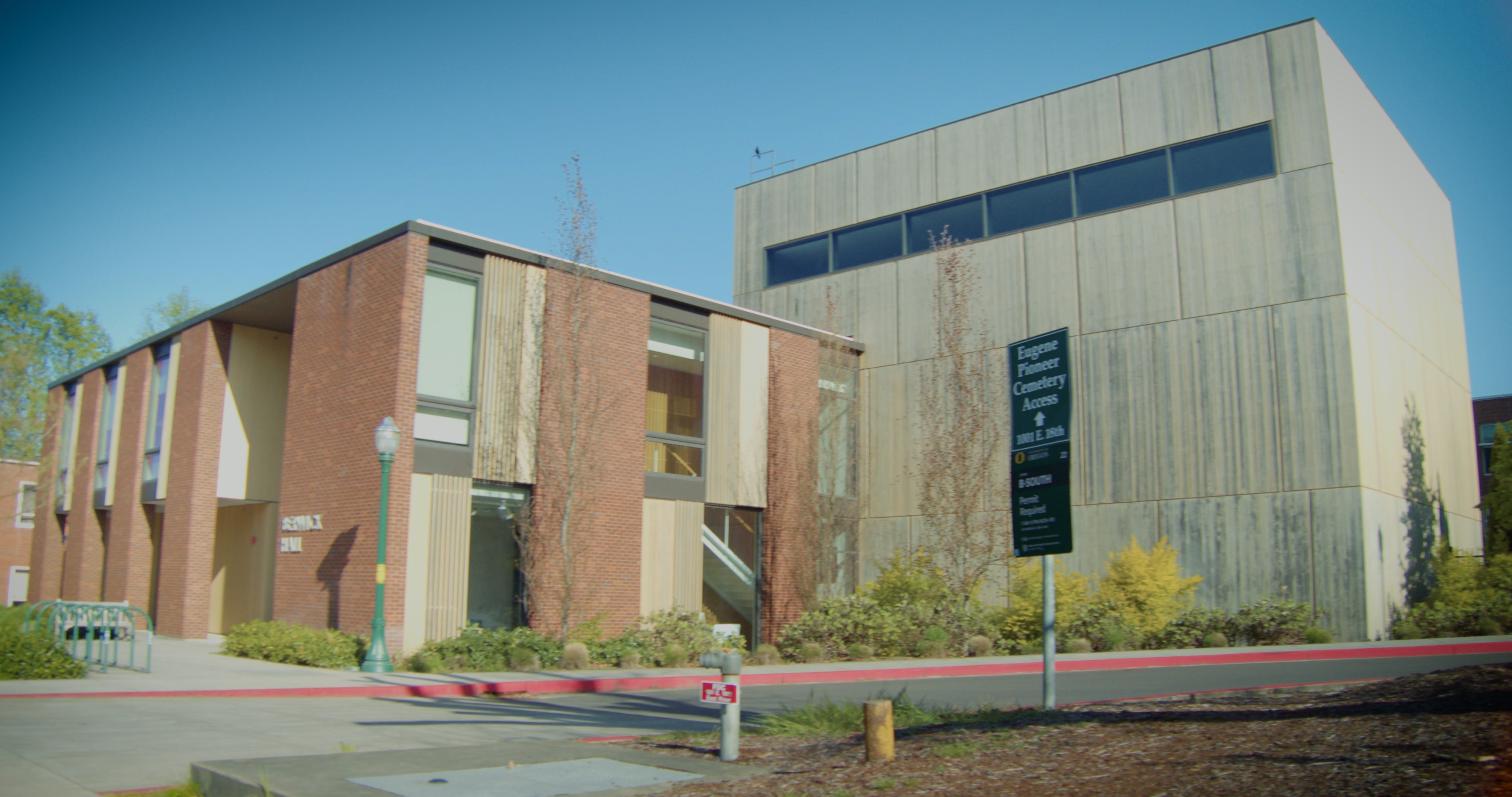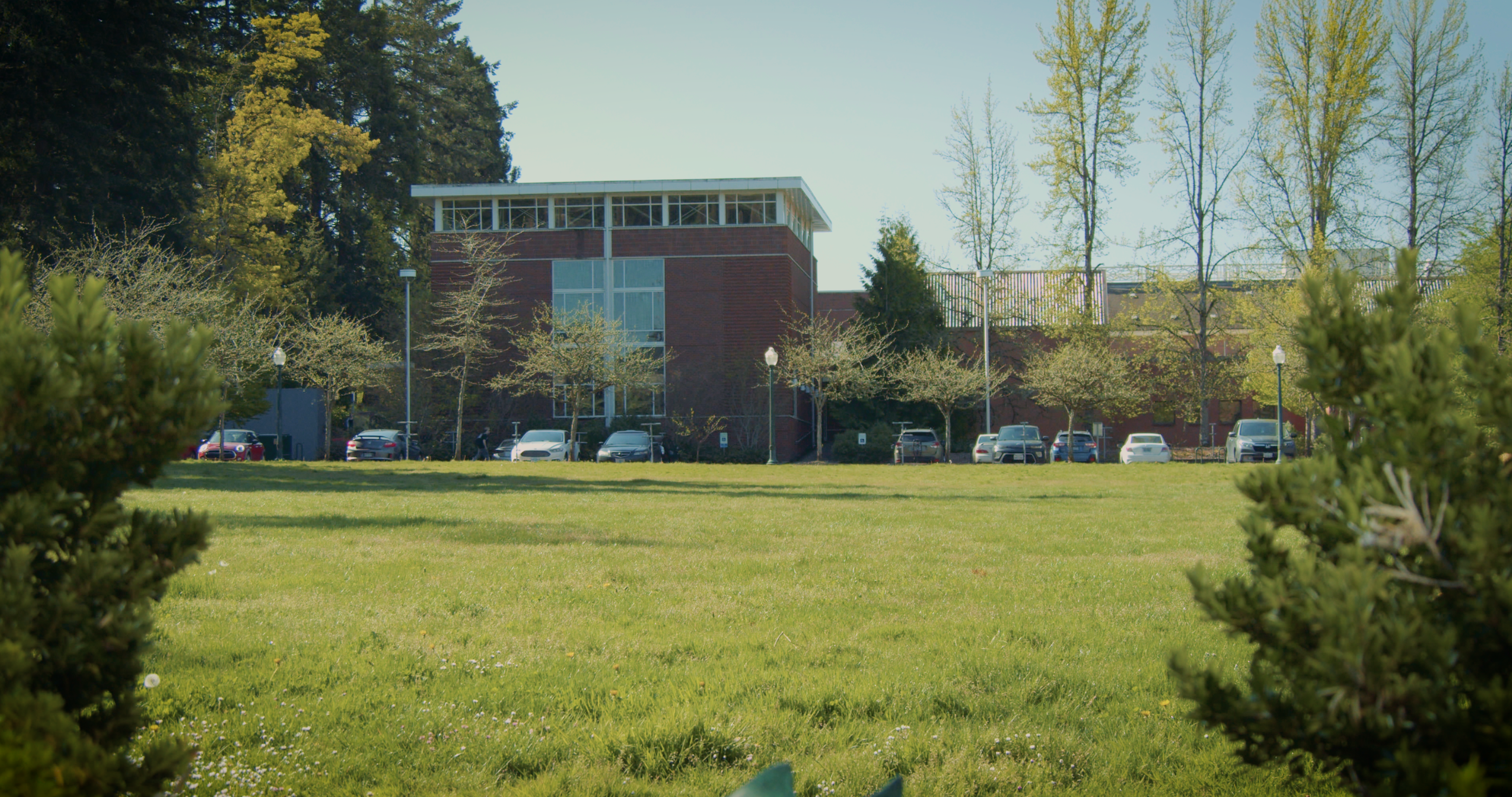The Tykeson Rehearsal Hall at the University of Oregon’s School of Music and Dance is a place where tradition and innovation converge. Built for the Oregon Bach Festival, the hall was designed with meticulous attention to its acoustics, making it ideal for early chamber music performances.
Since 2017 the hall’s analog AV system served its purpose of capturing student performances and showcasing the work of world-class musicians. But as the school’s reputation grew and its audience expanded far beyond the physical walls of Tykeson Hall, its analog infrastructure, tied to a single control room, could no longer keep up.
“We were really happy with the quality that we got from all of our analog equipment,” says Walton. “But we weren’t thrilled with the fact that we were tied down to just one place, or that it was a big hassle to run new lines every time you wanted to add or move a control room or a station.”
It was clear that something had to change to bring the school into the digital age without compromising the historic integrity of its spaces.
Expanding to the World Stage
The AV system Tykeson Hall was built around an analog workflow, with all microphones and cameras hardwired to a single control room located in the Bach Festival’s boardroom. “We were always competing with space in there,” says Walton. “Is this going to be a recording control room where we can put a technician, or is this going to be a place where the executives need to take phone calls and run meetings?”
While this setup worked in the past, it became increasingly restrictive as the school sought to expand its reach. The Oregon Bach Festival brings in hundreds of musicians as well as audiences from across the globe, and demand grew for livestreams and remote access to performances. “Audiences that weren’t able to be here were interested in all of the performances that were happening in this room and all the other places across campus,” says Walton.

However, the analog system required all recordings to be funneled into the single control room, where they were digitized for streaming. This meant that performances could only be managed from one inconvenient location, and expanding the system to other parts of the building would require costly and disruptive rewiring.
“Part of the challenge of getting that stuff out to the world and the wider audiences was that the way this building was built and designed – we couldn’t move out of the control room until we could get things on the campus network,” he explains.
The Hybrid Approach with Dante
The school tackled its challenges by adopting Dante, a network-based solution that allowed them to integrate their existing analog equipment into a modern, flexible system. By using Dante-enabled encoders and stage boxes, the school was able to transform its analog signals into digital ones that could travel across the campus network. This hybrid approach—bridging analog and digital technologies—not only modernized their system but did so without disrupting the school’s historic spaces. “We were able to move out of the boardroom into a newly created, dedicated, control room in a different room in the building,” Walton says.
At the core of the new system are Yamaha Dante-enabled stage boxes and AJA Dante AV Ultra video encoders. These devices act as bridges, respectively converting analog audio and video signals into Dante-enabled network signals.
“All of the analog microphones are coming in just over XLR cables, into the patch bay,” Walton says. “That gets fed into this Yamaha stage box, which converts all the analog audio into Dante network signals we send to the control room over the campus network.”

The Dante AV networked video workflow is equally transformative. “All of the video, coming in over traditional analog SDI cables, comes into the patch bay,” he says. These signals are then routed to the AJA Dante AV 4K-T video encoder. “This is the magic box that lets us place our control room wherever we need it. It converts our analog SDI video signal into a Dante AV signal, allowing the signals to travel wherever we need them across the campus network.”
A second AJA Ultra decoder located in his office, in a totally separate building, is connected to the same network as the devices in Tykeson Hall and Beall Hall. “The Dante devices are each assigned to their own domains, which we manage with Dante Domain Manager. This allows us to share devices between each building’s domains,” says Walton.
Dante Controller, the software used to route and manage Dante devices, played a fundamental role in simplifying the deployment of this hybrid system. “Dante Controller is the tool that we use to interface with our Dante devices,” Walton says. “It’s easy to learn and use, and it makes my job simpler, not more frustrating.” The software’s simplicity enabled the school to quickly train student employees in its operation while still offering enough advanced functionality to manage unique setups. “When we add Dante AV to the mix to get video on the network, we don’t need a separate piece of software to manage video flows. Sending video streams to wherever we need them to go is just as simple as routing audio has always been.”
The system also includes portable Dante AVIO™ USB adapters, which allow guest performers and technicians to plug laptops and other devices directly into the network and appear in Dante Controller for simpler routing and management.
A System Controlled from Anywhere
The new system has revolutionized how the School of Music and Dance manages its performances. Technicians set up control rooms wherever space was available, managing multiple performances simultaneously across various campus venues. Livestreams bring these events to audiences around the world, while faculty and students gain easy access to recordings for review and archival purposes.
The flexibility of the network-based AV system also opens up exciting possibilities for future workflows. “Currently, we use the second Dante AV decoder as a backup recording of performances in Berwick [Hall],” he says. “Potentially in the future, we are looking at consolidating all recording and streaming of events in our multiple venues into just one control room. This decoder would allow us to pipe the video stream over from Berwick.”
Now the school can preserve its investment in analog infrastructure while gaining the flexibility of a modern networked AV system. The need for fixed control rooms was eliminated, and performances can now be managed from anywhere on campus with just a laptop and a network connection.
“We really enjoy the fact that we can now set up a control room or a mixing station or whatever we need, wherever we need it,” says Walton. “It’s made life pretty easy.”


